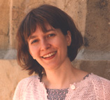
Abstract
Transition metal oxides exhibit extraordinary phenomena not observed in any other materials class. For example, they show “Mott” metal-insulator transitions (MITs) that are caused by strong electron correlations. While properties have been studied extensively in bulk materials, oxide heterostructures allow for new approaches to control their properties and to study the fundamental physics, through the manipulation of carrier concentration by composition, modulation doping, field effect, two-dimensionality and quantum confinement, which cannot be realized with bulk materials. Here we discuss the properties and physics of epitaxial oxide interfaces that involve strongly correlated (“Mott”) materials and the band insulator SrTiO3. The presentation will also highlight the importance of materials quality in achieving the desired control over these phenomena. We describe the development of oxide molecular beam epitaxy (MBE) to produce electronic device-quality oxide films. For example, we demonstrate record electron mobilities in SrTiO3 thin films grown by MBE, which exceed even those of single crystals. We show that interfaces between a Mott insulator, GdTiO3, and SrTiO3 form a tightly confined, two-dimensional electron gas with extreme charge carrier concentrations, on the order of 3×1014 cm 2. We discuss the importance of charge distributions and electrostatic boundary conditions. We will also briefly discuss the thermoelectric properties of SrTiO3 and GdTiO3/SrTiO3 heterostructures.
Biography
Following undergraduate studies in Materials Science at the Friedrich-Alexander University Erlangen-Nürnberg(Germany), she received her degree in 1992, and did her doctoral work at the Max-Planck Institute for Metals Research in Stuttgart (Germany). She received her doctoral degree from the University of Stuttgart in 1995. Following postdoctoral research positions in the US and Belgium, she held an Assistant Professor position in Materials Science at Rice University from 1999 to 2002. In 2002, she joined the UCSB Materials department. Her research interests are in transmission electron microscopy techniques, in particular, the development of scanning transmission electron microscopy as a quantitative tool in materials science, novel gate dielectrics, oxide thin film growth and the correlation between structure and the electronic and transport properties of oxide heterostructures. She has authored or co-authored more than 140 journal publications. In 2000, she received an NSF Career Award. In September 2011, she was awarded Fellow of The American Ceramic Society.